Brussels is often referred to in a rather unfortunate way when the talk falls on Belgium; “Skip Brussels, go to Gent and Brugge instead”, “why Brussels? Antwerp is so much better”, “Brussels doesn’t represent Belgium”, and so forth. I’ve heard them all. Admittedly, Brussels doesn’t have the best reputation. The city is dirty and loud and quite frankly doesn’t even compare to cities like Gent and Liège when it comes to beauty (the Grand-Place excluded), but Brussels has its own draw. Its own quirks. In fact, Brussels is a very culturally unique city unlike any other city I’ve ever set foot in.
For long, the city has been caught in the crossfire between the French and the Flemish cultures. In many ways, Belgium is a divided country, and this is very apparent when travelling between the regions of Wallonia and Flanders, the first of which is predominantly French-speaking although with a small German-speaking community as well, and the latter of which is Dutch-speaking (or Flemish, a southern dialect of Dutch). Brussels, however, does not belong to any of these regions, and the city is bilingual with both French and Dutch as the official languages! That might seem pretty straightforward for a country that is split between two majorly different languages, if only it wasn’t for Brussels’ odd demographic. You see, most of the city’s population is ethnic Flemish but with French as their mother tounge. It’s no wonder this country has an identity issue!
However, this is exactly what makes Brussels so interesting, and what makes it stand out among its more popular neighbouring capitals. And I, for one, was excited to finally explore the city during my Belgium trip with my younger brother and three friends last Easter. We stayed in a rather dirty but cheap apartment near the Brussels-Midi train station, and spent two full days exploring the city with our friend as a personal guide!
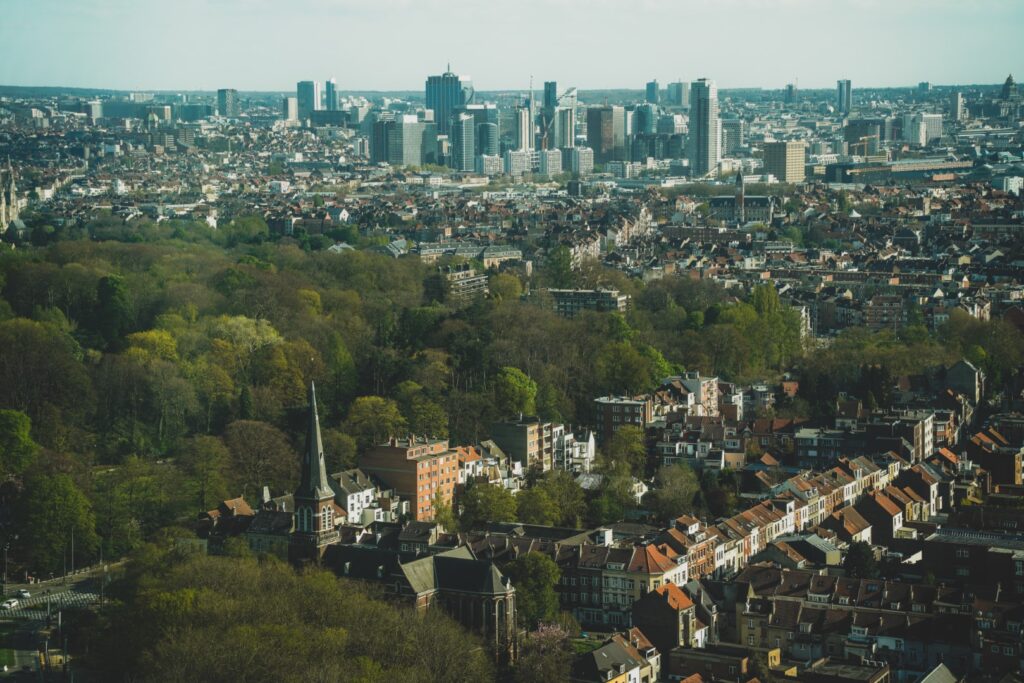
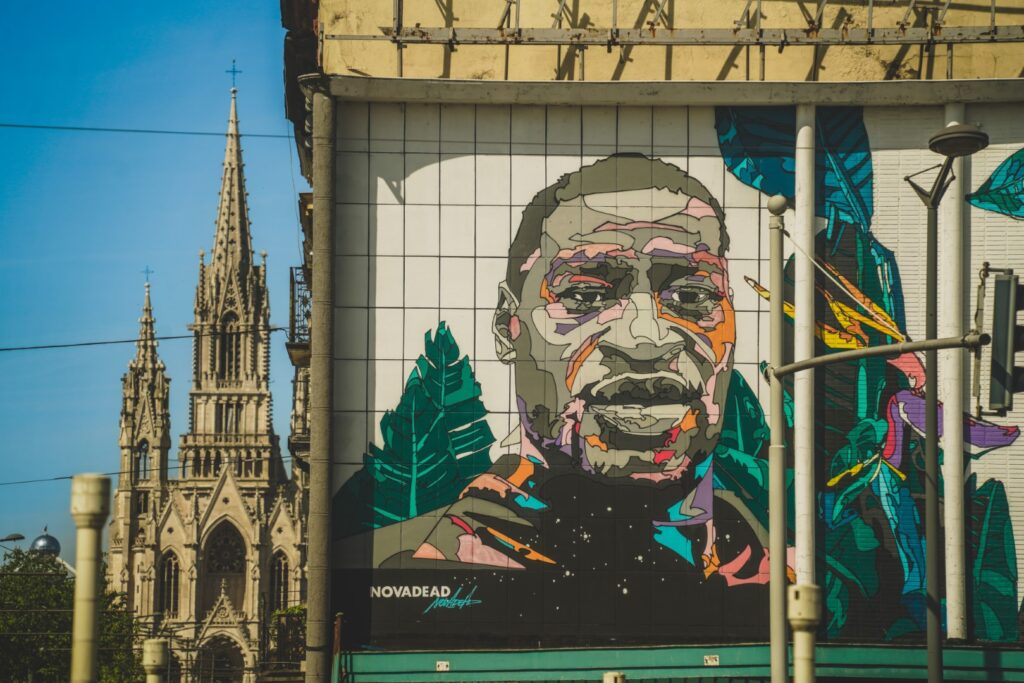
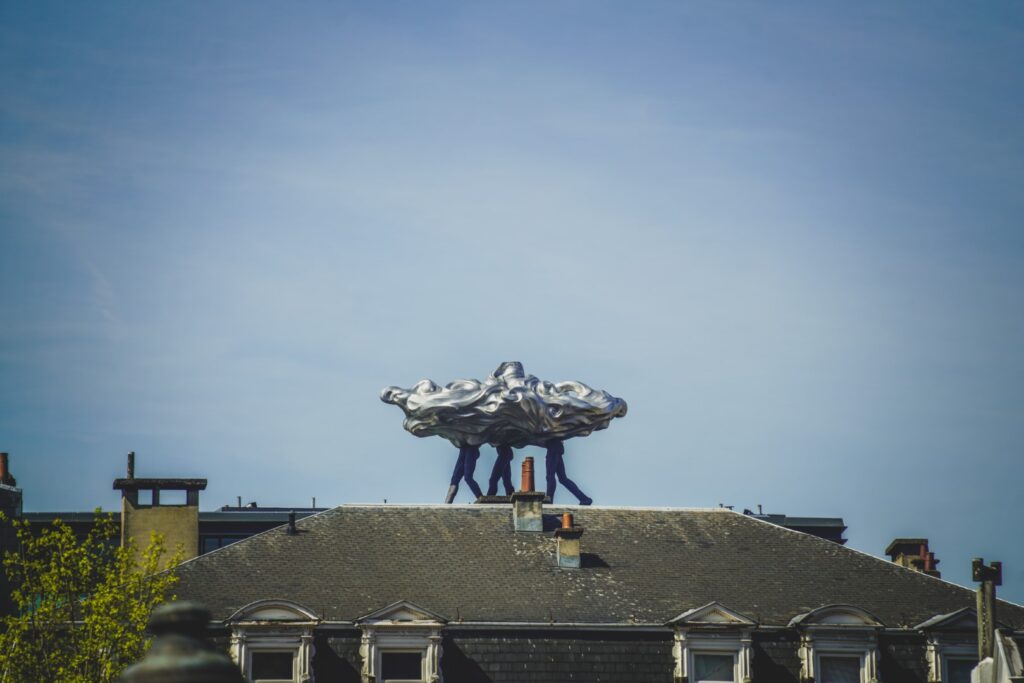
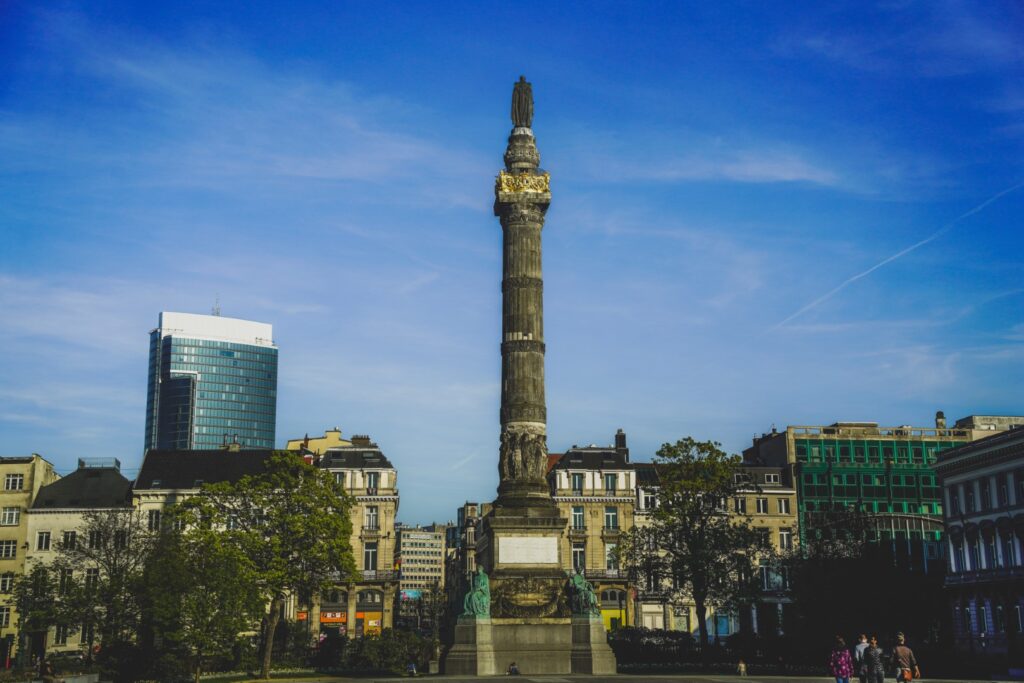
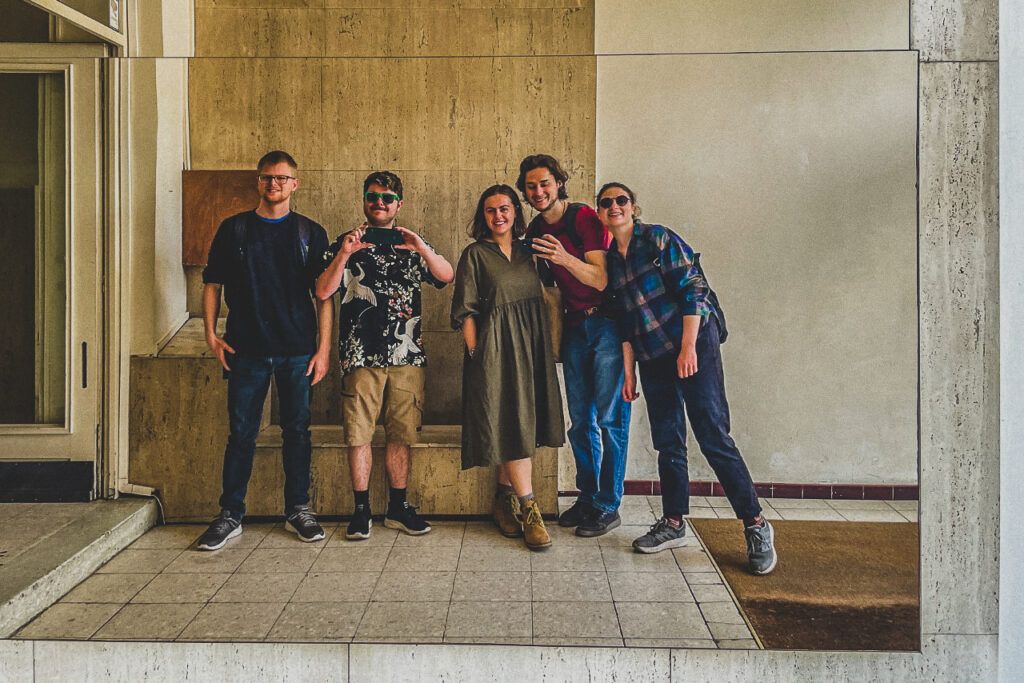
Technically, I had visited Brussels once before on a bus journey to Paris in 2012. I only had a short stopover, but I remember seeing the giant steel buildings of the city and thinking to myself that it lacks character. Well, turns out 17-year-old me was very wrong. Brussels is far from boring or lacking in character. Let me take you through 12 places and experiences in Brussels that essentially changed my mind and scored Brussels a place on my non-existent ‘best capitals in Europe’ list.
La Grand-Place
Okay, we might as well start with the city’s showstopper number one. The UNESCO-listed Grand-Place is hands-down the most beautiful square I’ve ever seen, and it’s going to take a lot to ever beat it.
This central square dates back to the 11th century, but the buildings that surround it today date mainly from the late 17th century. Elaborately decorated with gold details, these lavish buildings include Baroque guildhalls, the neo-Gothic King’s House, which contains the Brussels City Museum, and the town hall. The latter is the true showpiece here. Built between 1401 and 1455, it is the only remaining medieval building of the square and is considered a masterpiece of Brabantine Gothic architecture.
We spent our first evening dining (very expensively) at the square, and returned several times to see it in both daylight and at nighttime. I loved it the most during the night when all the buildings were lit up, glistening beautifully under the full moon. I also really enjoyed wandering around the narrow streets that surround the square. This is where you’ll find many of Brussels’ famous bars and cafés, and it just has such a cozy atmosphere throughout. Very dissimilar to central squares in most other big cities.
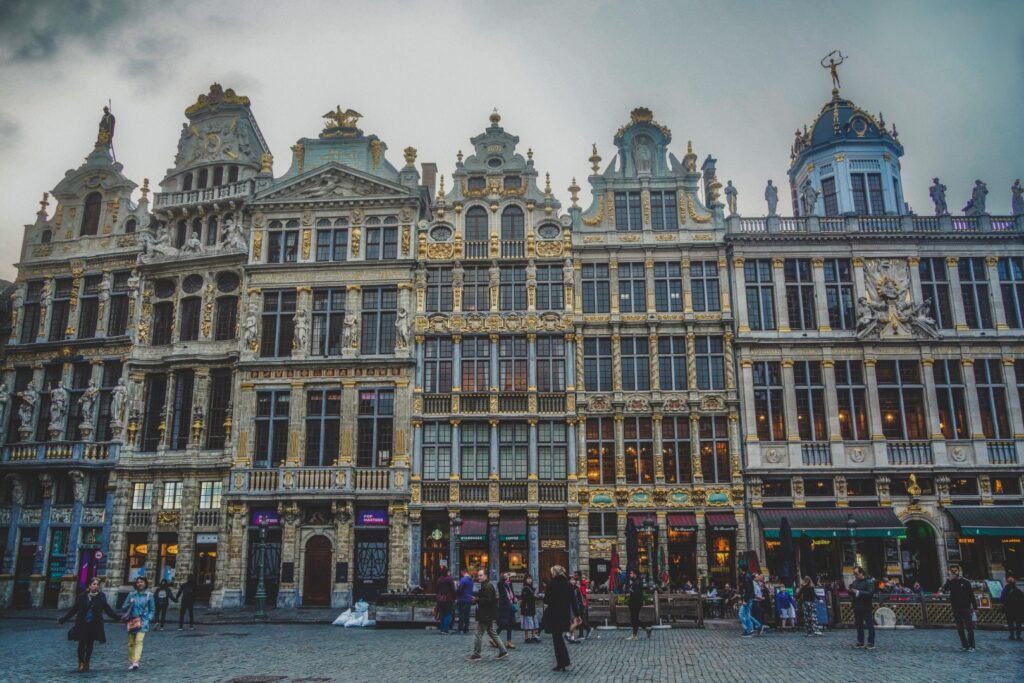
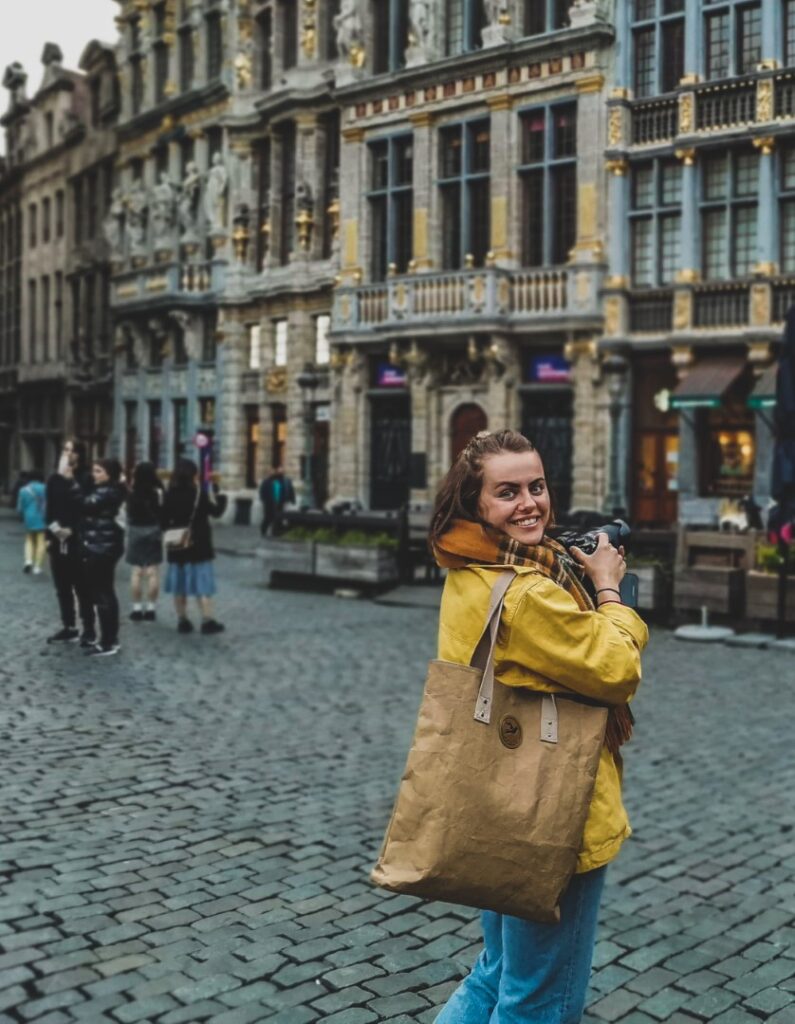
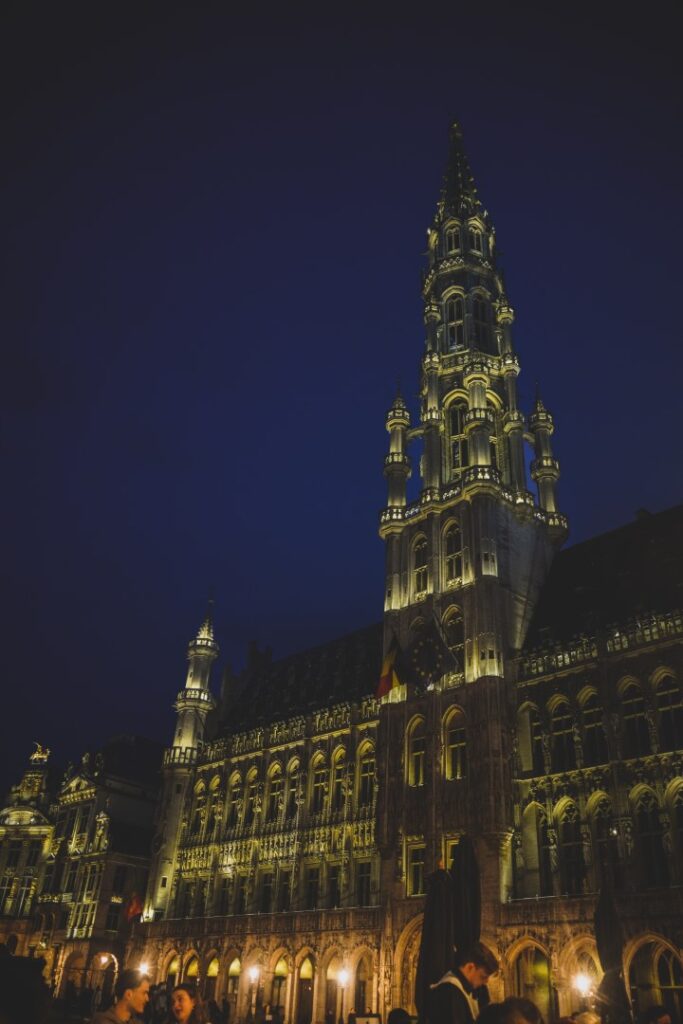
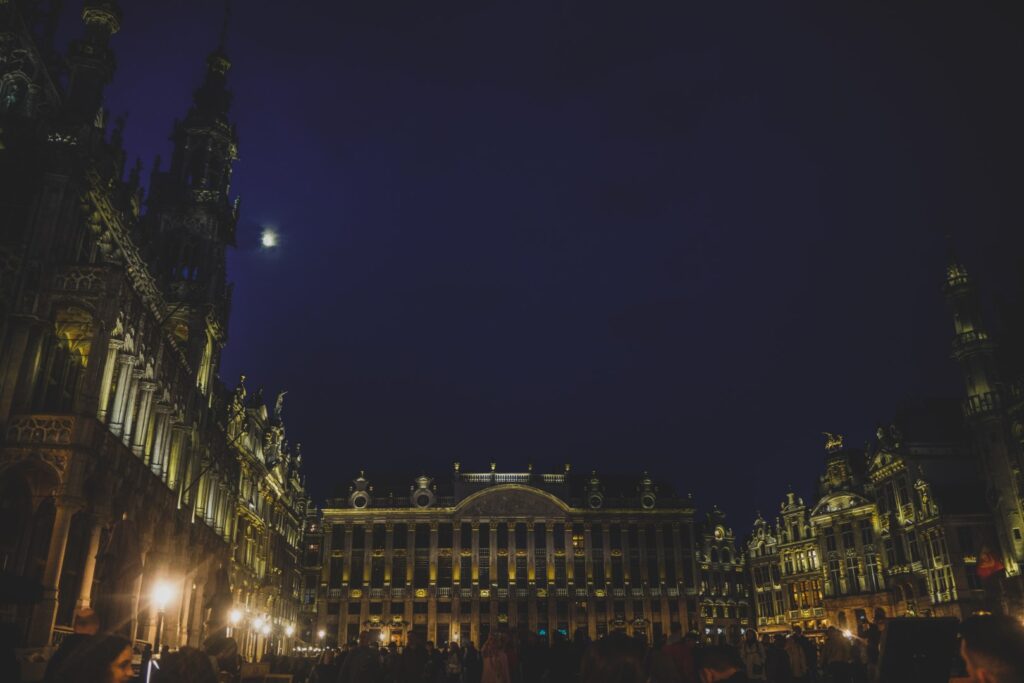
Waffles!
Belgian waffles are mouthwateringly delicious! These are the best things I’ve ever eaten in my entire 27-year-old life! I swear. I’m not even exaggerating, not even a little.
Gosh, I went all-out on the vegan waffles, basically stuffed myself, but it was so incredibly worth it. So crispy. So sweet. So incredibly tasty. SO MOREISH. Belgian waffles are worth all the hype they get!
Veganwaf serve the most delicious crunchy vegan waffles with all the vegan toppings you can imagine. Find them in the Galerie Agora by La Grand-Place! Non-vegan waffles can be found throughout the city, but bear in mind that there’s a huge difference in the prices. Some start at three euros without toppings, others for as much as twelve euros!
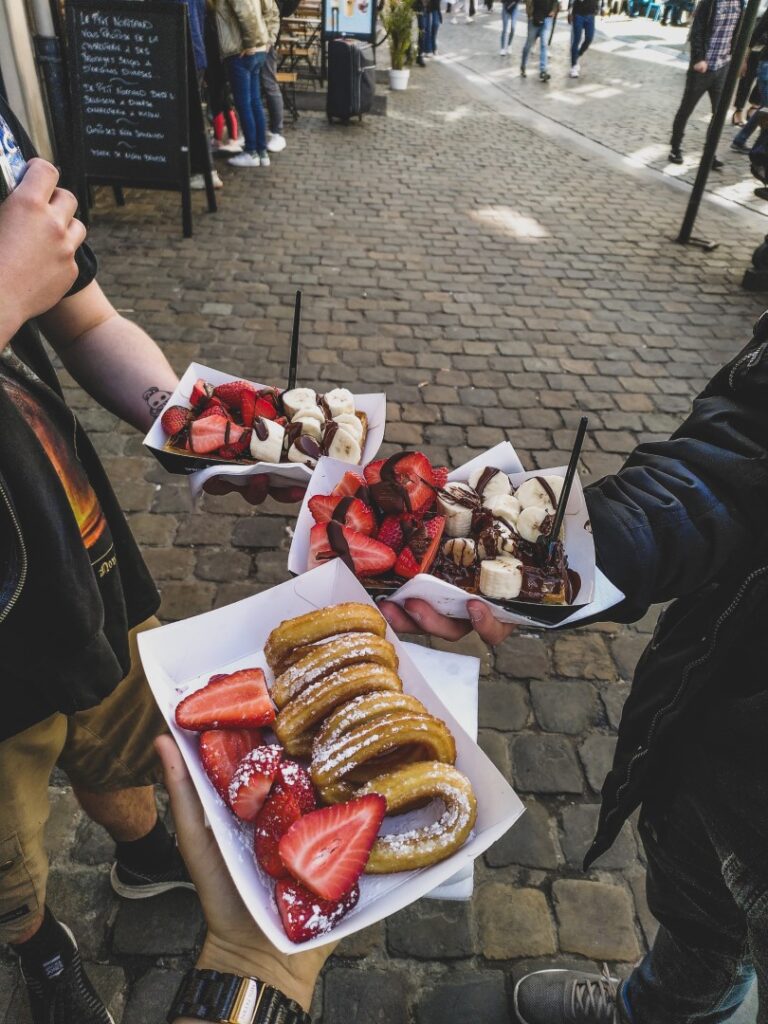
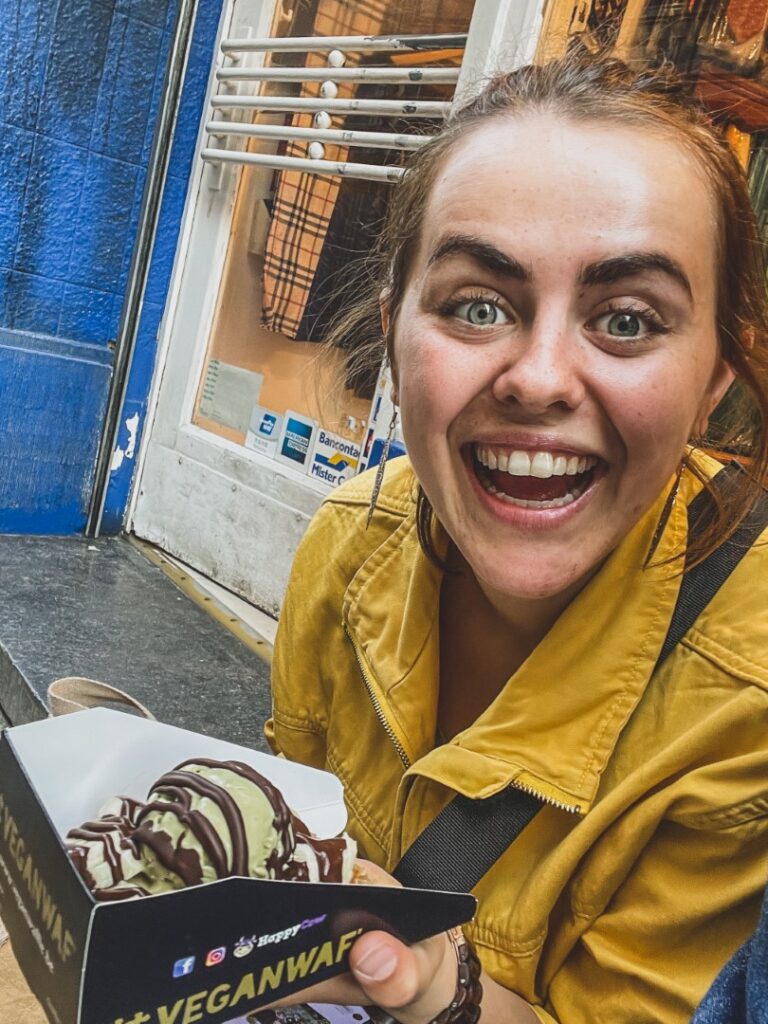
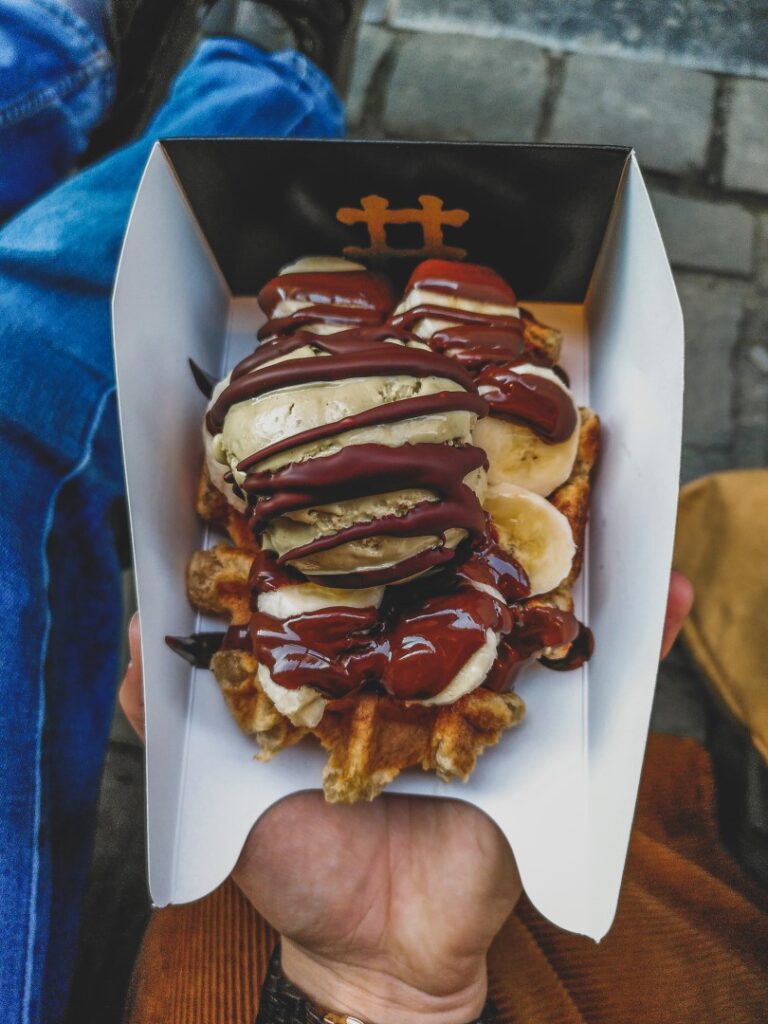
The Parlamentarium, home of the EU
There are two sides to Brussels, I’d say. There are the laid-back and unassuming neighbourhoods that make up most of the city, and then there’s the fancy and paramount European Quarter with the Espace Léopold complex which is home to the European Parliament, a legislative chamber of the European Union. While not the official seat of the European Parliament (that’s located in Strasbourg, France), most of the Parliament’s work takes place at the Brussels site as most other institutions of the EU are located in Brussels as well.
The Parlamentarium is the visitors’ centre of the European Parliament and it’s actually the second-largest parliamentary visitors’ centre in the world. As an EU citizen myself, this was a highly interesting place to see, and just one of the places that makes Brussels so interesting to me. Which other city has this much influence on politics in Europe?
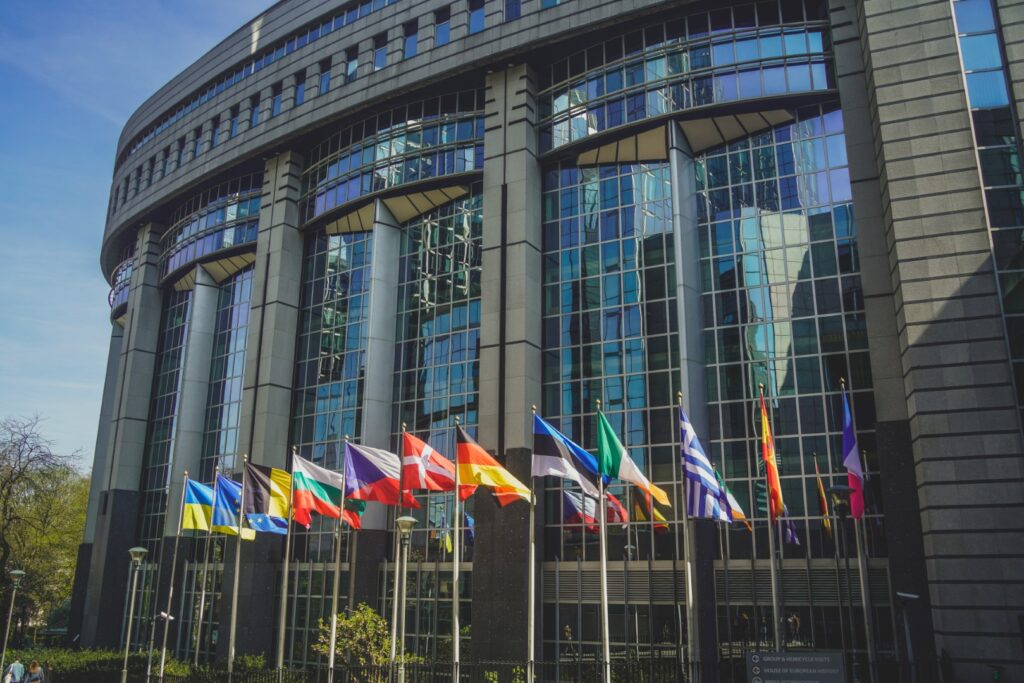
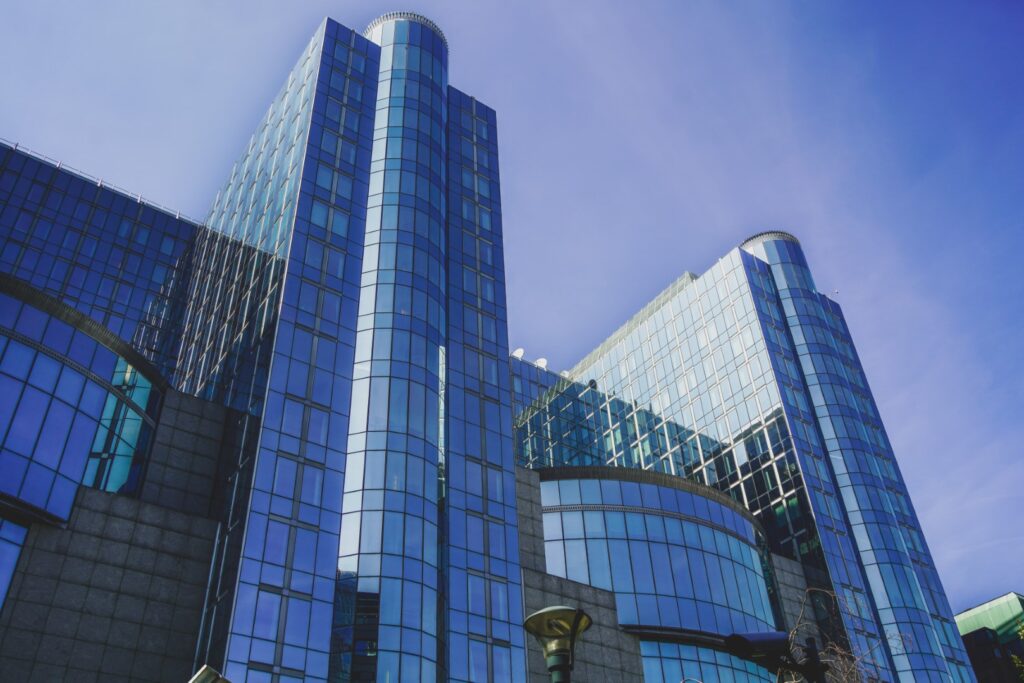
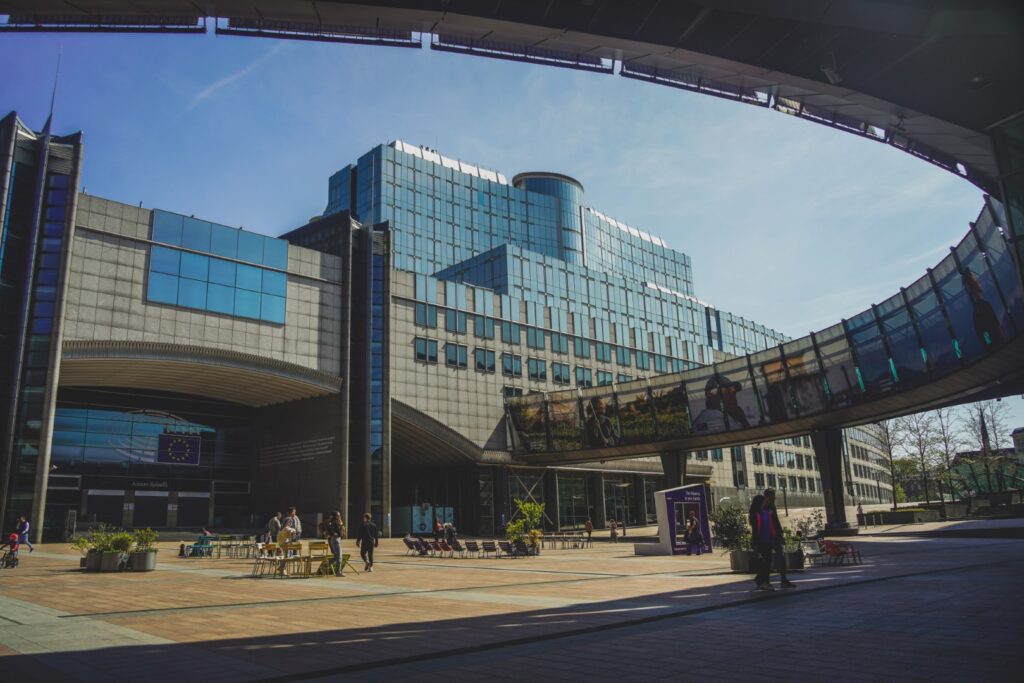
The peeing statues
Who doesn’t love a rude statue?
The one thing Brussels is most known for – okay, except for housing the European Parliament, – is a little guy known as Manneken Pis. This tiny bronze statue was designed in 1388, and features a little naked boy having a pee into a fountain. Yeah… At least it’s more interesting than Copenhagen’s Little Mermaid despite its comparably small size that always seems to take tourists by surprise. Apparently, this statue used to provide the citizens of Brussels with drinking water… Imagine that for a second!
But Manneken Pis isn’t the only pissing statue in the city… In fact, he has a sister in Jeannike Pis from 1987 located down a narrow alleyway full of busy bars. And they even have a pet dog, Zinneken Pis, which doesn’t get nearly as much attention as his human equivalents, so you might even get this one to yourself. I found it quite fun hunting out these little odd statues!
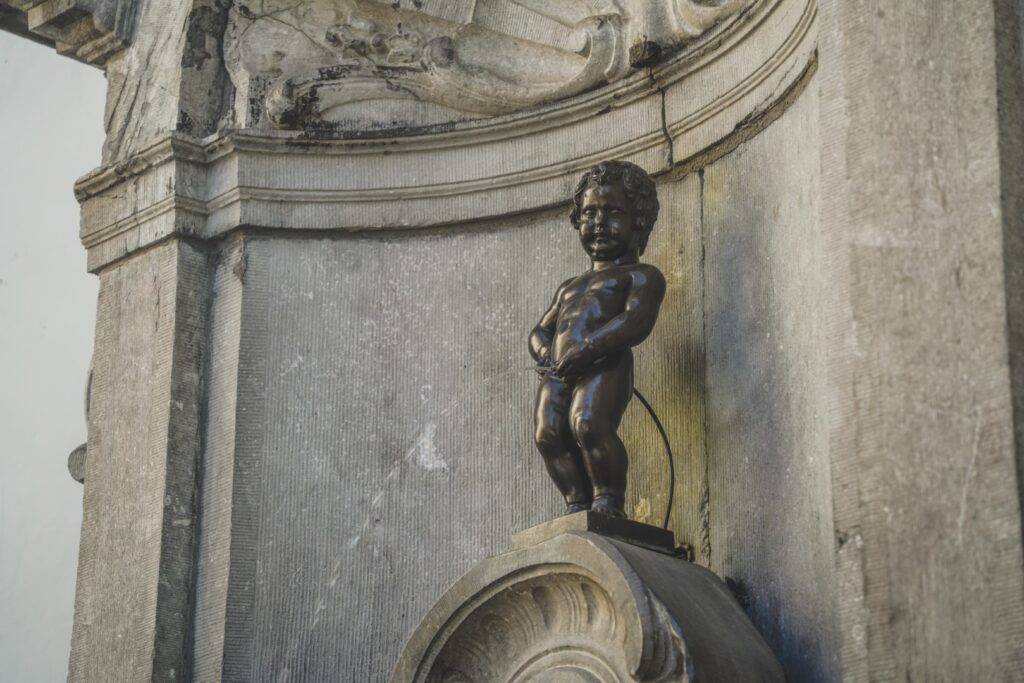
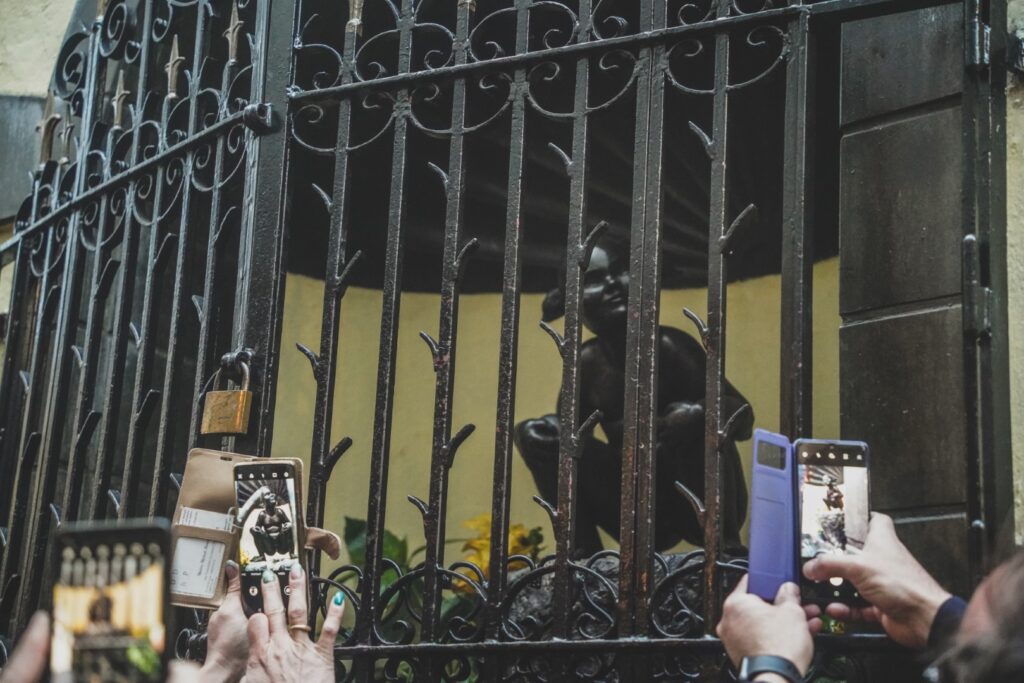
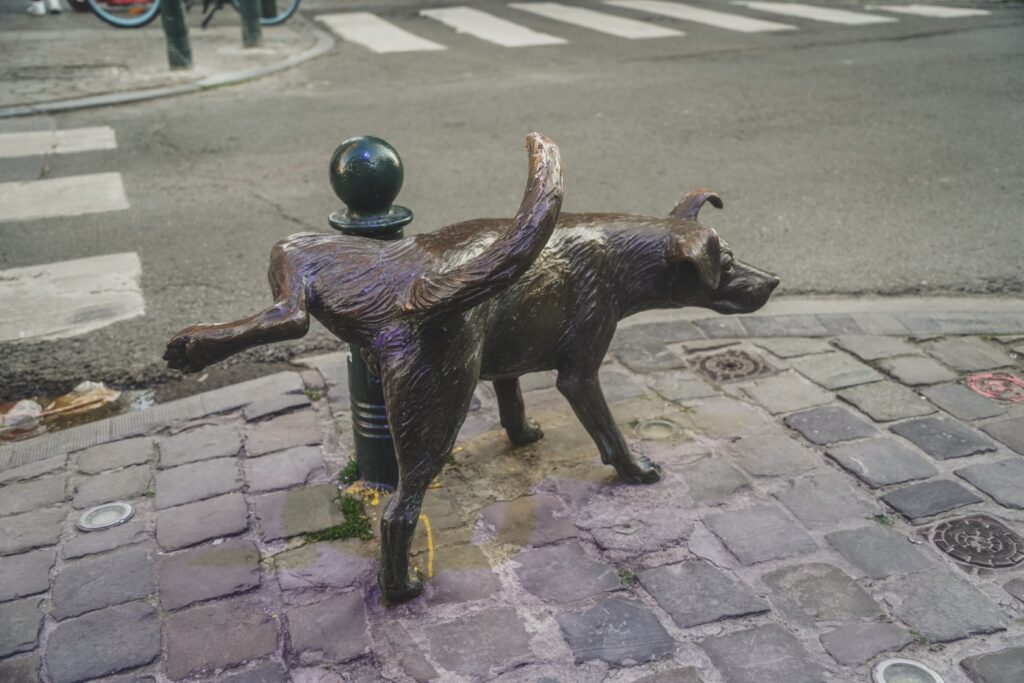
Art Nouveau architecture
Brussels is home to some stunning Art Nouveau architecture, which stands out among the newer soulless buildings. The Old England building is perhaps the best example of this. It was constructed in 1899 by Paul Saintenoy from girded steel and glass, and it’s one of the earliest examples of this type of building style. It’s located on Rue Montagne de la Cour which in addition has a great view of the city centre.
Belgian architect Victor Horta employed the same strategy for his four elaborate town houses scattered around Brussels. They are considered such fine examples of Art Nouveau architecture that they were inscribed as a UNESCO World Heritage site in 2000. I only had time to visit one of these masterpieces, L’Hôtel van Eetvelde from 1895, which is located at Avenue Palmerston and stands out greatly among the neighbouring buildings.
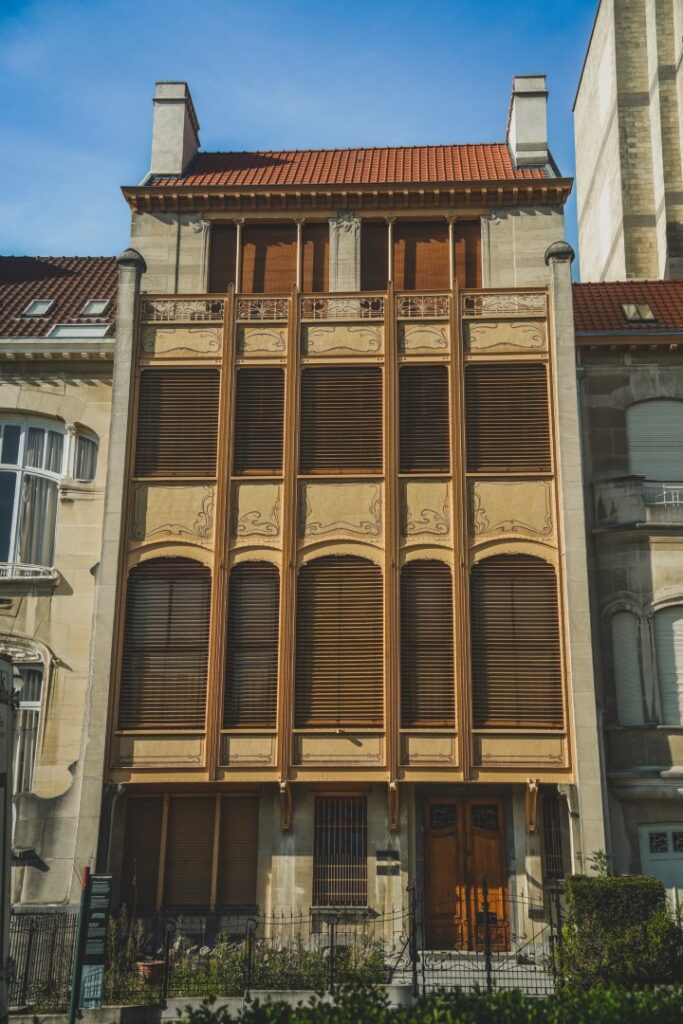

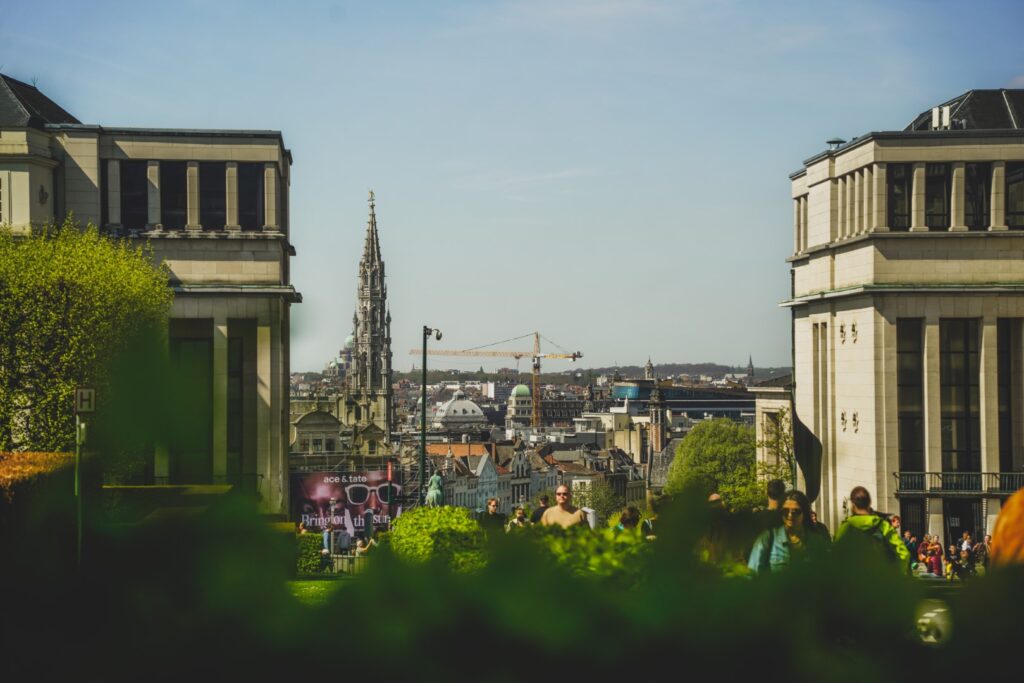
An elevator to Quartier des Sablon
One of the districts I enjoyed wandering around in the most, was Quartier des Sablon, the historic upper town of Brussels. Our friend took us to an elevator that goes up to Place Poelaert where we found a great view of the Brussels skyline.
From there, we wandered through the quaint streets of this trendy neighbourhood, which is overflowing with cozy little cafés, small green parks, atmospheric bars, antique stores and Belgian chocolate boutiques.
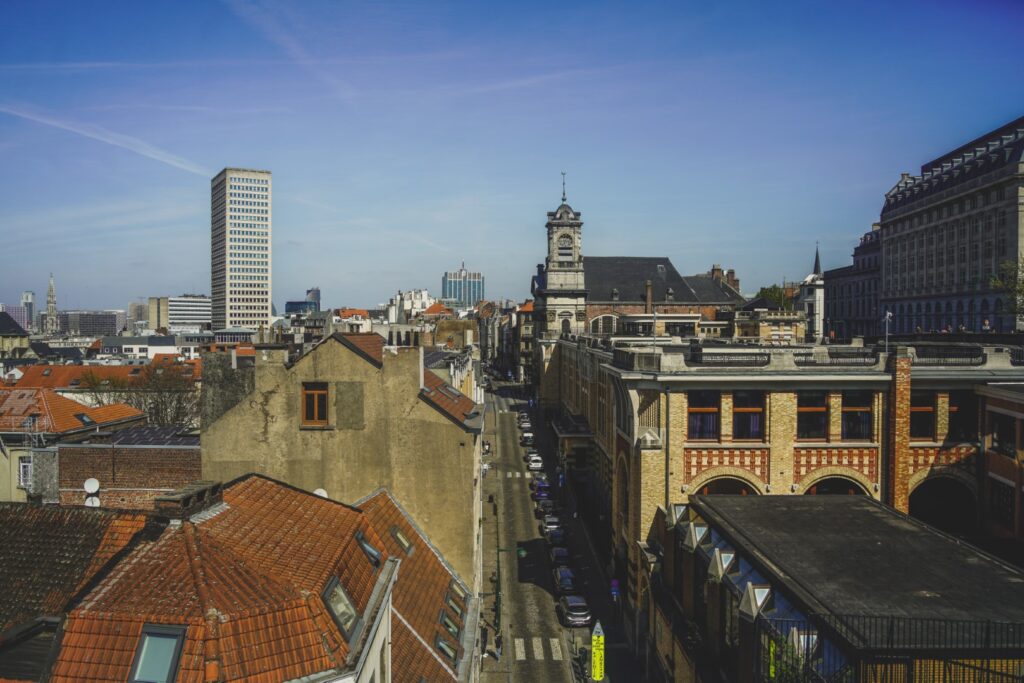
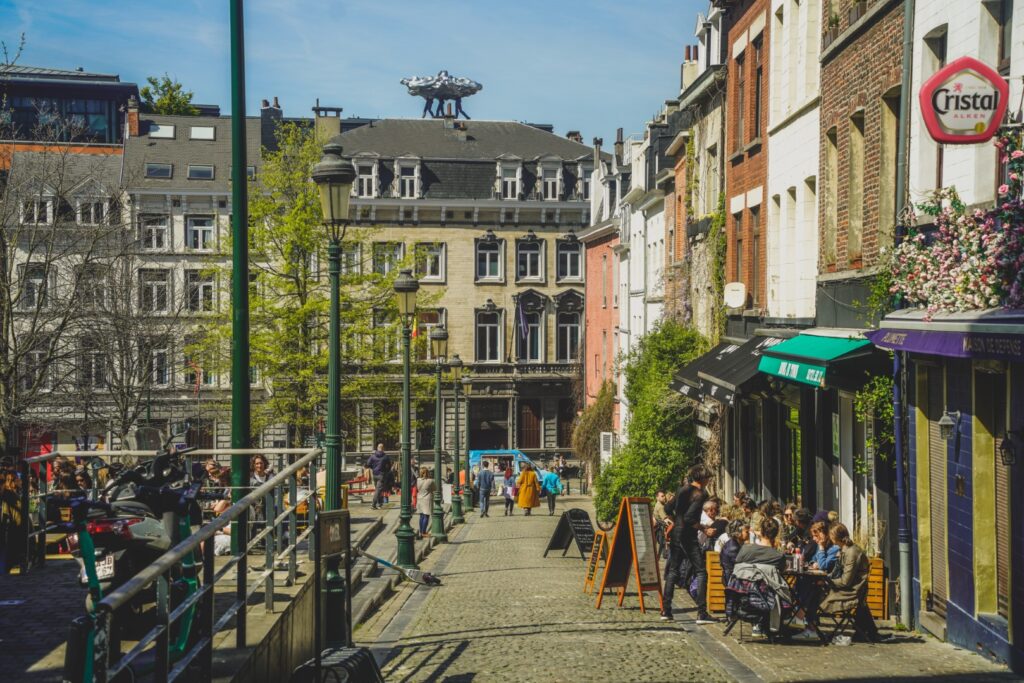
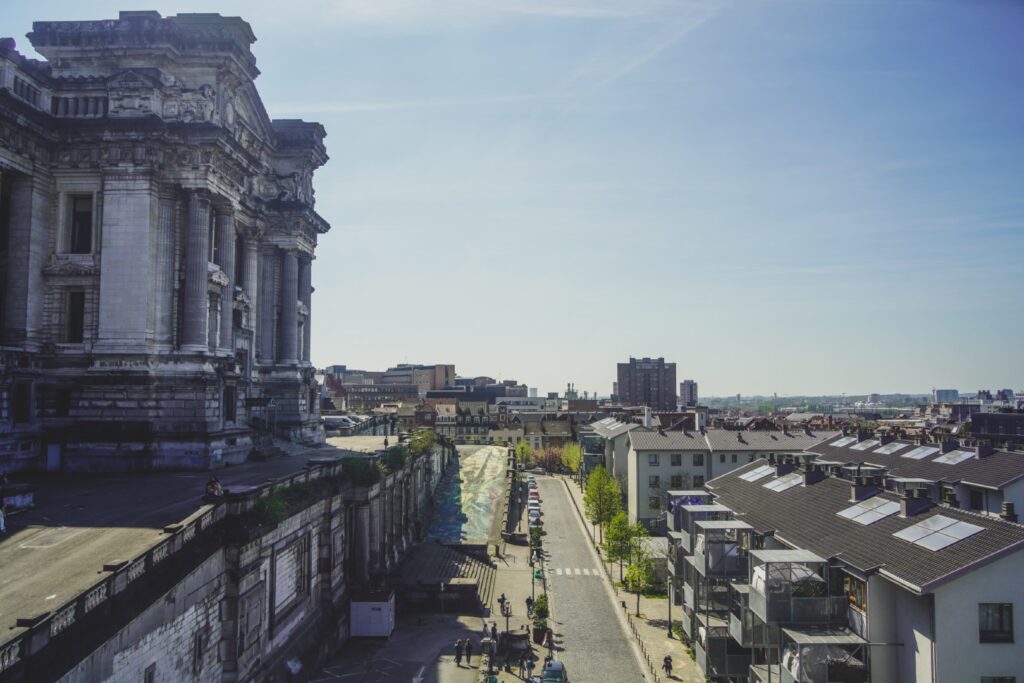

Saint Michael and Gudula Cathedral
Notre-Dame de Paris, move over.
The Cathedral of St. Michael and St. Gudula is an equally beautiful Roman Catholic cathedral, considered to be one of the best examples of Brabantine Gothic architecture much like the grand town hall. I never understood why Notre-Dame de Paris gets so much hype when other cities have similar-looking cathedrals, and this one is a great example of just that.
Construction of the cathedral began in the 11th century on the site of an earlier chapel. While mostly Gothic, the cathedral also includes other architectural features, for example a Baroque chapel and neo-Gothic details such as its elaborate stained glass windows. We weren’t able to explore the interior as we arrived a bit late, but from the looks of the photos I’ve seen online, it’s well worth a visit. The cathedral has an essential spot on the Brussels skyline, and is – in my humble opinion, – the second-most beautiful church in the city after the Church of Our Lady of Laeken (read below).

A rocky pond at Marie-Louise Square
I love a good city park, and the little park at Marie-Louise Square is perhaps one of the prettiest parks I’ve seen. It’s very small and dominated by a rocky pond, containing a fountain and a man-made grotto, and it’s home to Florida tortoises.
Neo-Renaissance, Neo-Gothic and Art Nouveau townhouses beautifully surround the pond, giving the place an almost poetic feel. One of Victor Horta’s famous hotels (L’Hôtel van Eetvelde) is located right next to the pond, which only adds to the charm of the place.
This was my favourite place in Brussels, and it was by chance we even saw it. We were just wandering around when we stumbled upon the park. We lingered for a good while, unable to pull ourselves away from the romantic sight.
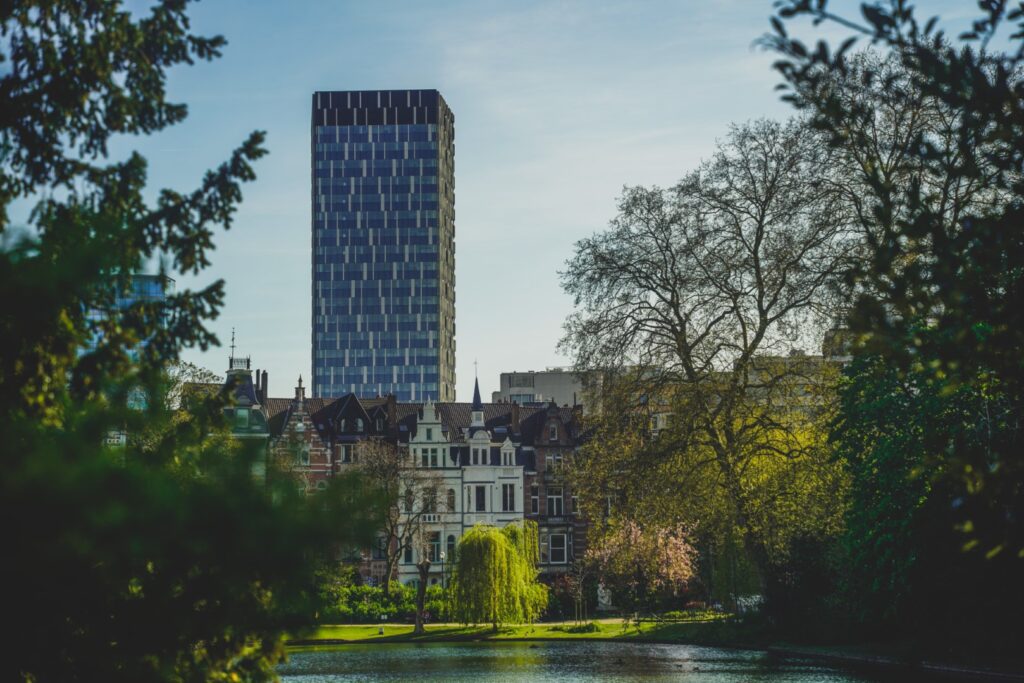
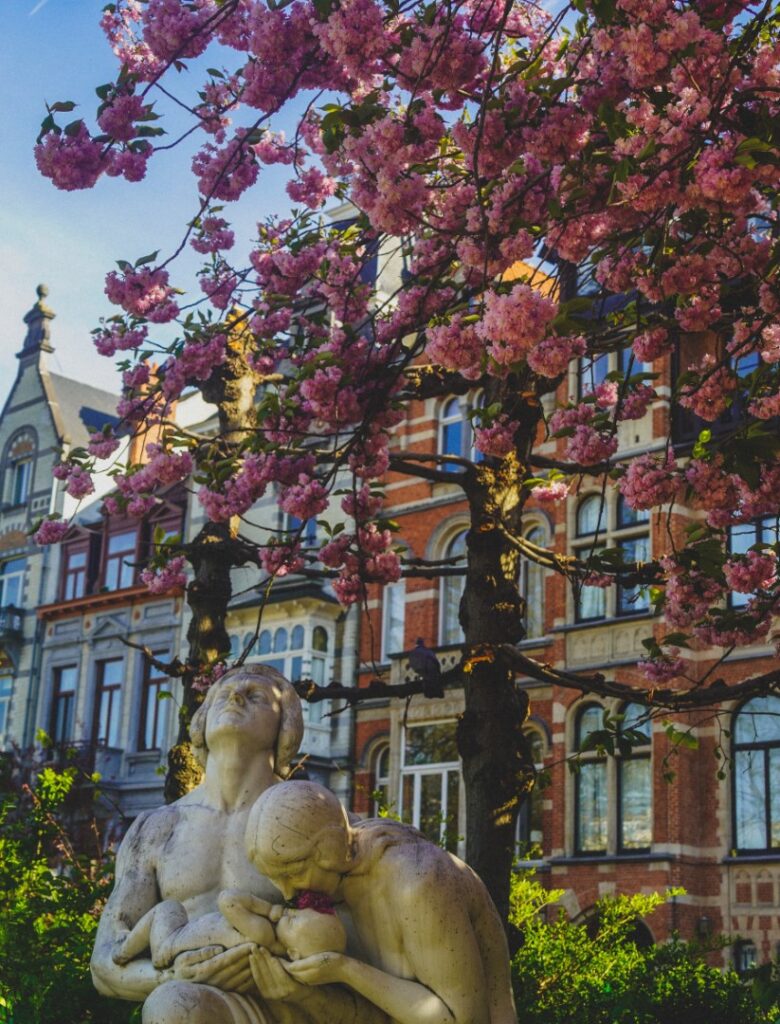
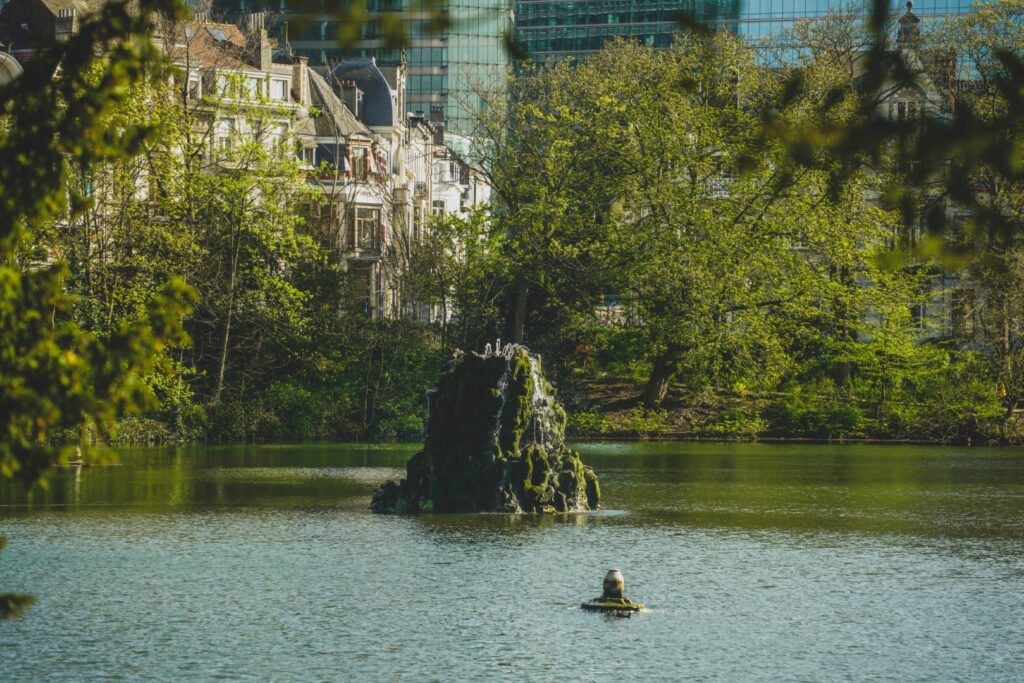
Atomium, the oddest building you’ll ever see
Along with Manneken Pis, Atomium is the most recognizable landmark in Brussels. It looks likes a futuristic spaceship or something like that. An insanely impressive structure unlike anything else in the world!
The odd landmark was constructed in 1958 for the Brussels World’s Fair (Expo ’58). It stands 102 metres tall and consists of steel clad spheres connected in the shape of a unit cell representing an iron crystal that has been magnified 165 billion times! Today, the Atomium serves as a museum with an exhibition about its history, and there’s a restaurant at the top sphere with a gorgeous view over Brussels. Had it not been for our friend, I doubt I would’ve gone inside the Atomium, but I’m so glad we did as it’s truly a unique experience to see inside the spheres and take the everlong escalators that connect them.
It’s a bit of a trip from the centre of Brussels, but Atomium is well worth a visit if you spend more than a day in the city. Even if just to see it from afar. The best view is found at Parc de Laeken. It’s one of the weirdest and most interesting buildings I’ve ever seen, and definitely something that sets Brussels apart from other cities. It’s crazy to think that it wasn’t even supposed to exist past its six-month birthday, but the locals loved it so much, they decided to keep it up. I think that was a very wise decision!

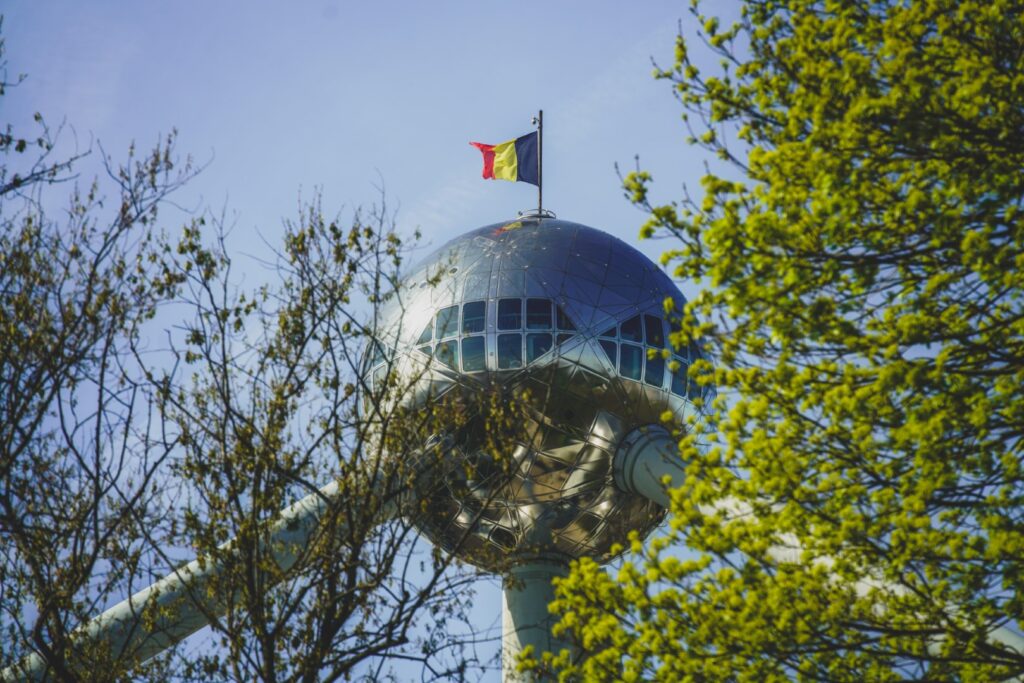
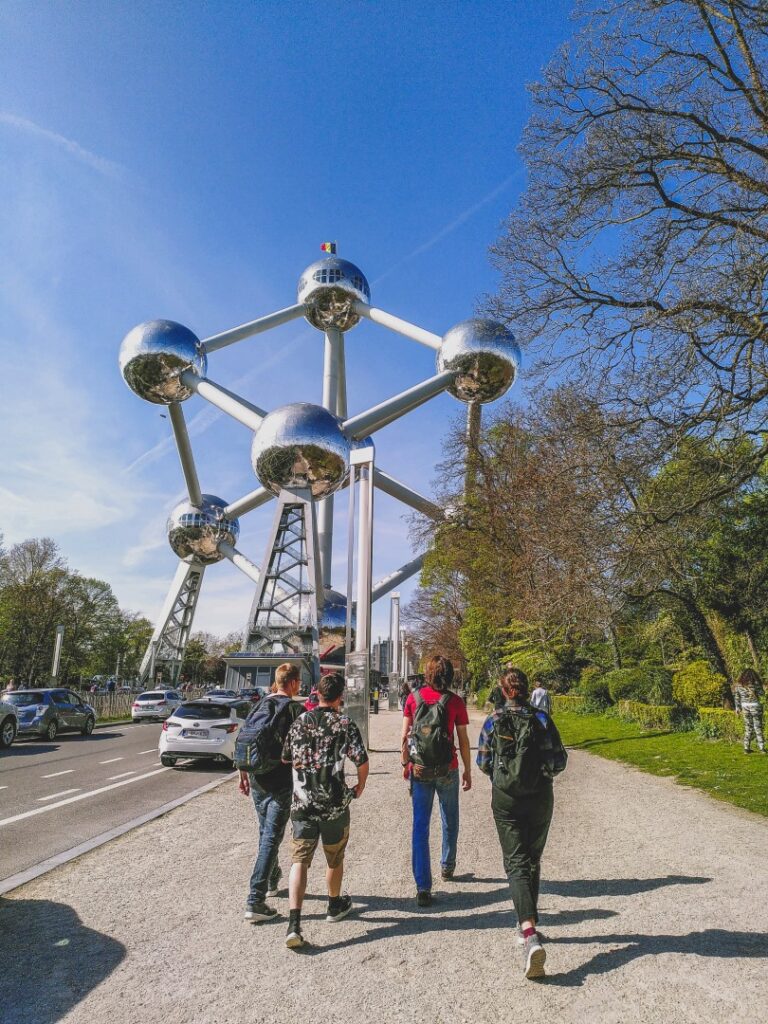

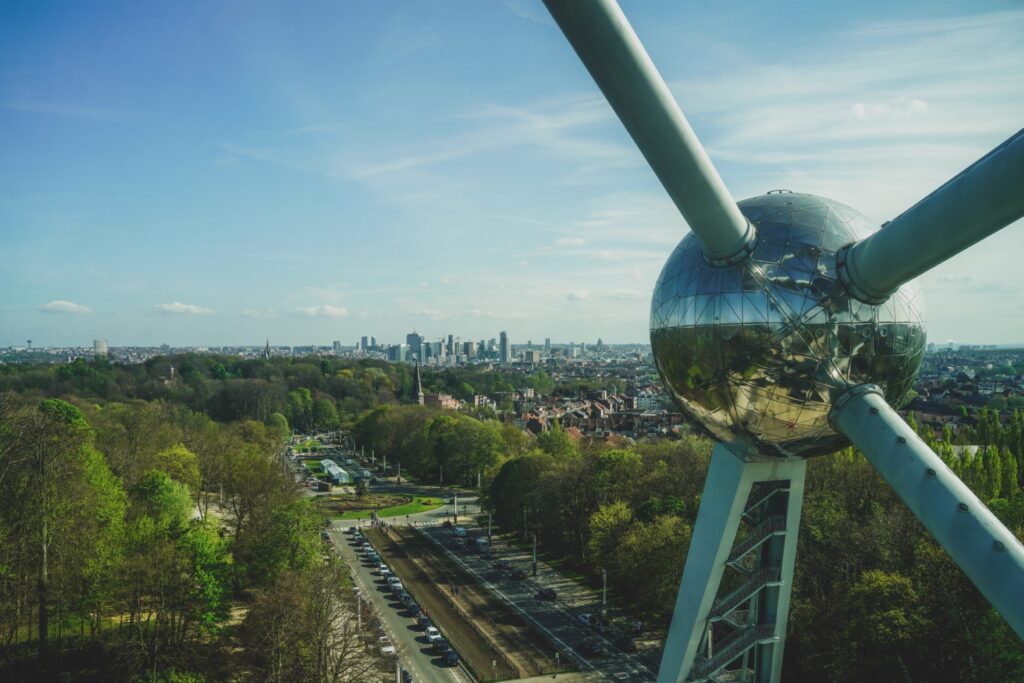
Church of Our Lady of Laeken and its creepy cemetery
My favourite random stumble-upon place was the Church of Our Lady of Laeken, and especially the adjacent cemetery, which might be the creepiest place I’ve ever set foot in.
The church itself is a stunner, the prettiest in the city. Construction began in 1854 and was finally completed in 1909. It was built in memory of Queen Louise-Marie, wife of King Leopold I. A crypt below the church holds the tombs of the Belgian Royal Family, including all former kings.
The cemetery I mentioned above is the burial place of the major Catholic nobility of Belgium, with many significant families and famous artists laid to rest there. It’s the oldest cemetery still in use in Brussels, and it’s most certainly also the creepiest. As we were wandering around the cemetery, looking at all the elaborately decorated tombstones, we randomly stumbled upon a huge cellar full of graves. This was when we realized it wasn’t no ordinary cemetery.
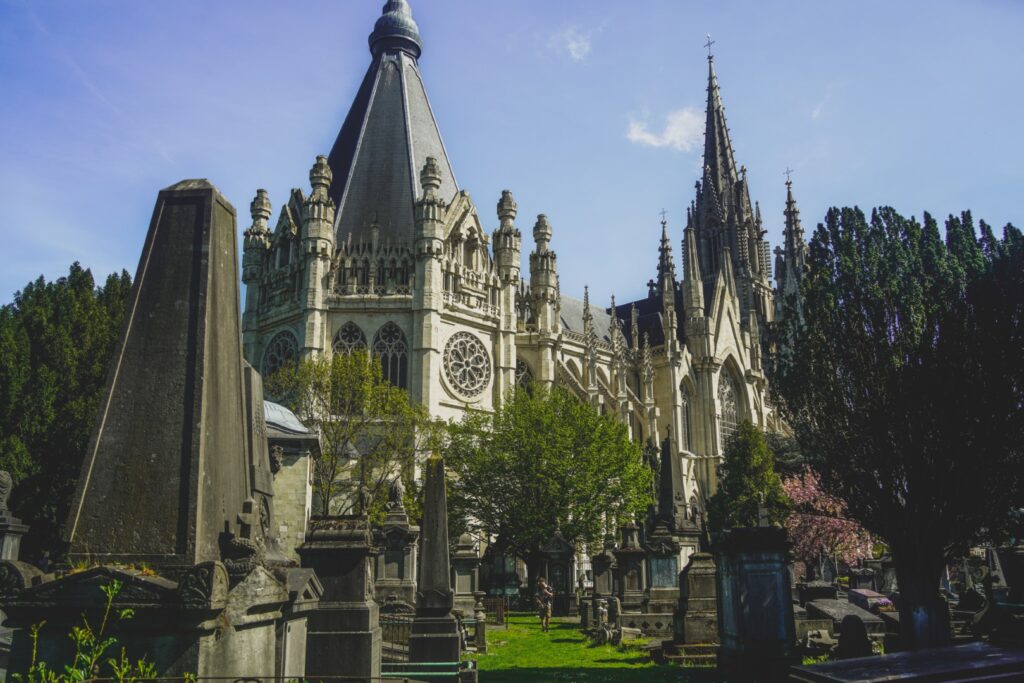
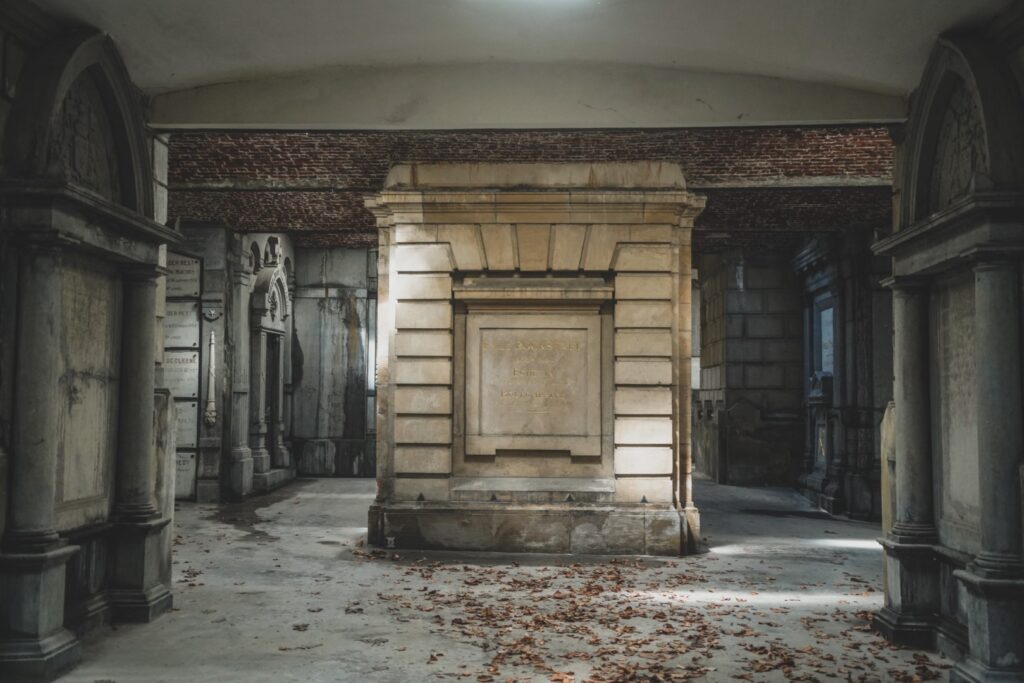
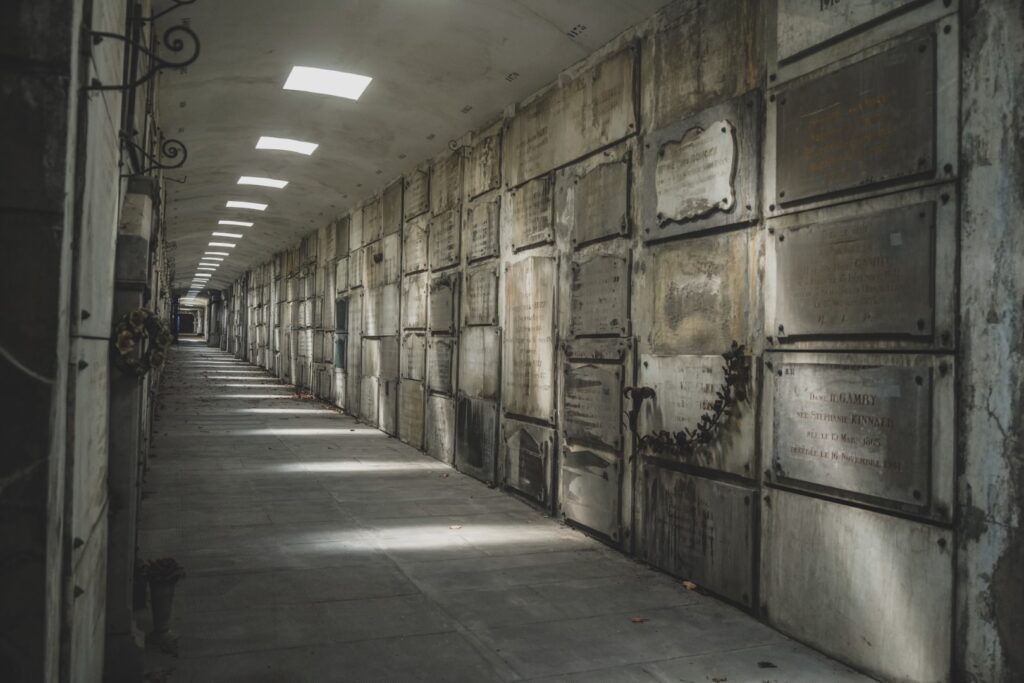
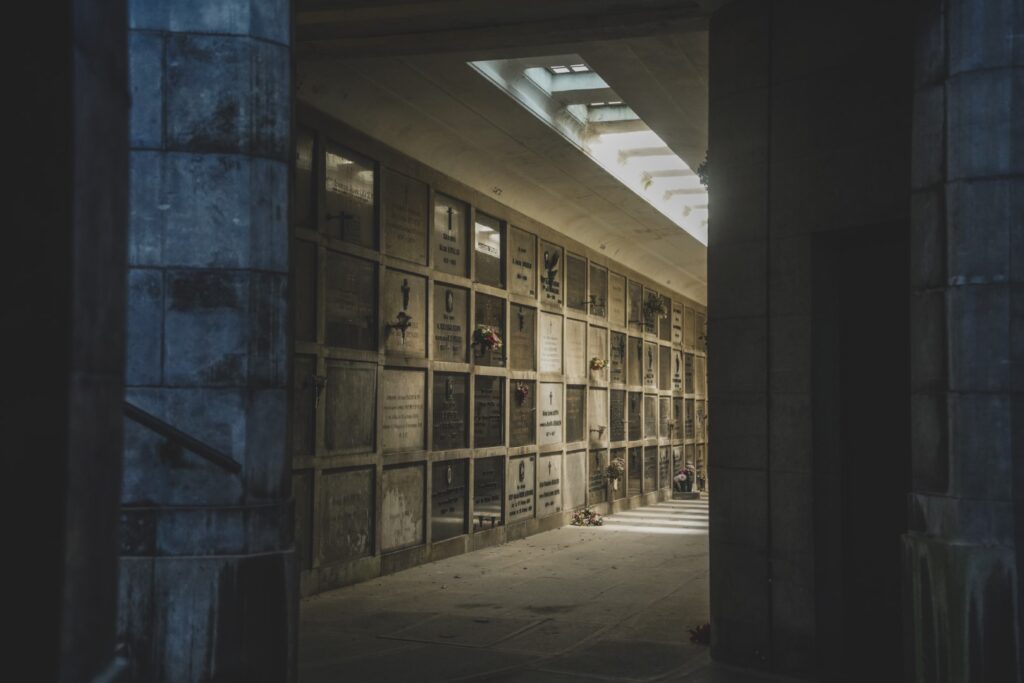
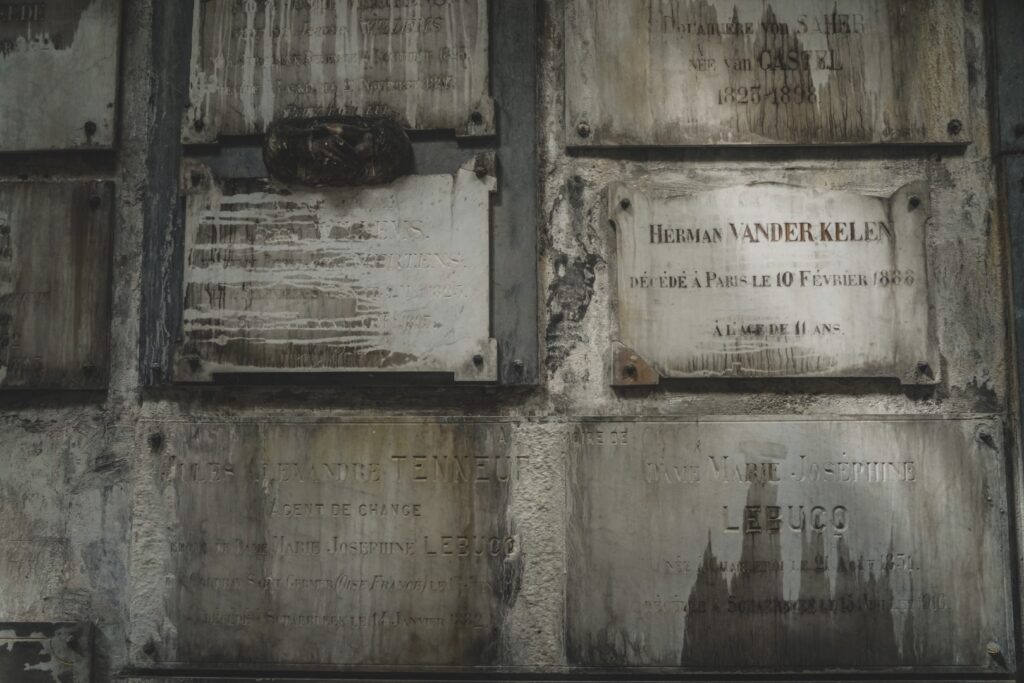
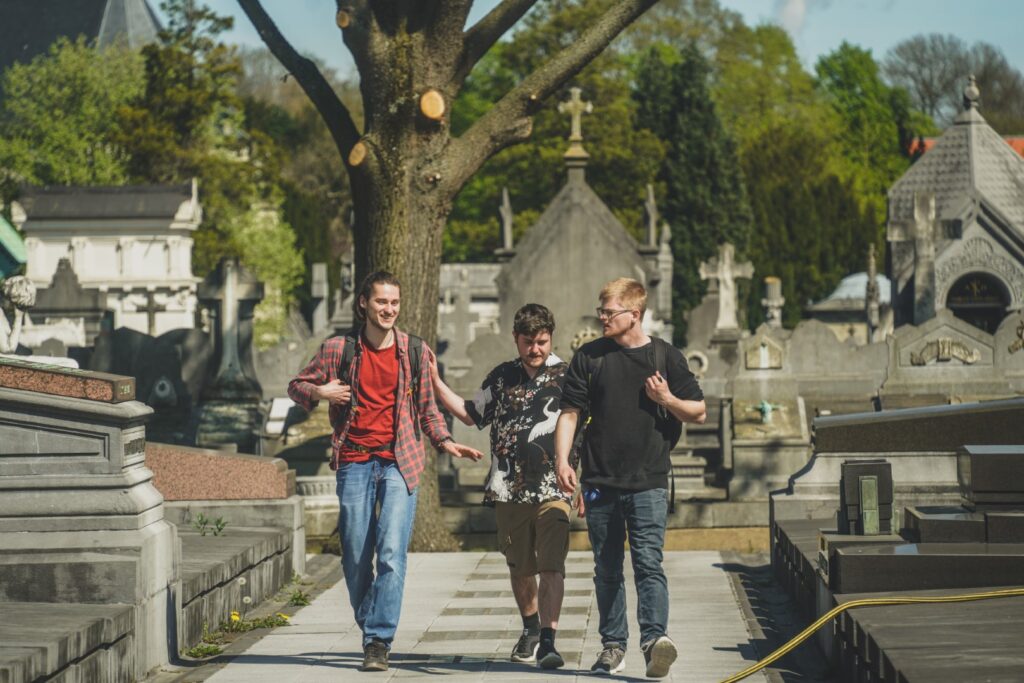
Atmospheric (kittie) bars!
Belgian beers are wildly popular, and Brussels is known for its many cozy bars selling local craft beers. Since I was with a bunch of beer-crazy folks, we visited quite a few of these famous bars.
My favourite was Toone, a small bar in a narrow alleyway, connected to the Royal Toone Puppet Theatre. But it wasn’t because of the beers or even the puppet theatre memorabilia, but because of a little cat that lives in the bar who seemed to be loving all the attention. There’s nothing like a cuddly bar kittie!
Beers and bar life are a deep-rooted part of Belgian culture, so even if you’re not a big beer lover like me, I would recommend visiting a few, just to get a feel of it. And if you adore cats, you know now which one to choose!
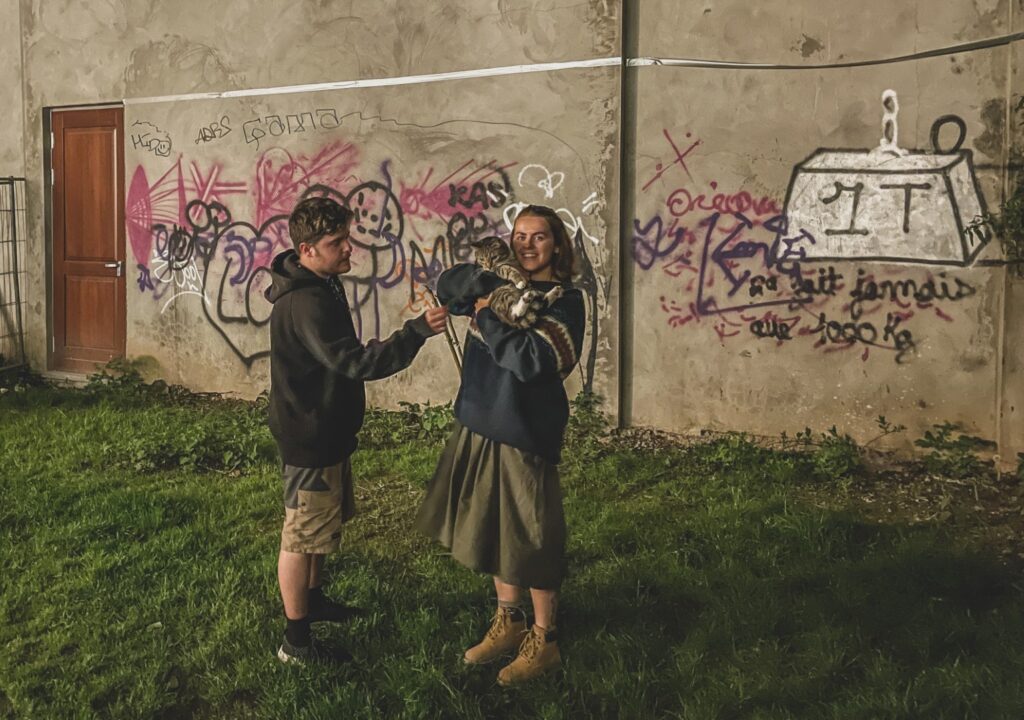
That pretty sums up my feelings about Brussels. I wasn’t sure about the city when I was there, but the more I think about it, the more I like it. Mainly because Brussels is so different from any other city I’ve seen. And because the city is so incredibly Belgian, while still not resembling other cities in the country at all.
I wouldn’t listen to what the majority of people will tell you about Brussels. I’d say, if you have a week or so to spend in Belgium, Brussels is well worth adding to your itinerary, if not only to give yourself a little breather from all the medieval cities.
Leave a Comment
Pingback: Discovering Liège, my unexpected favourite Belgian city – Northtrotter on 08/12/2022
Pingback: In the footsteps of Charlemagne: An evening in Aachen, Germany – Northtrotter on 08/12/2022
Pingback: My December 2022: A teary goodbye to Lolland and a Christmas at home – Northtrotter on 08/12/2022
3 COMMENTS